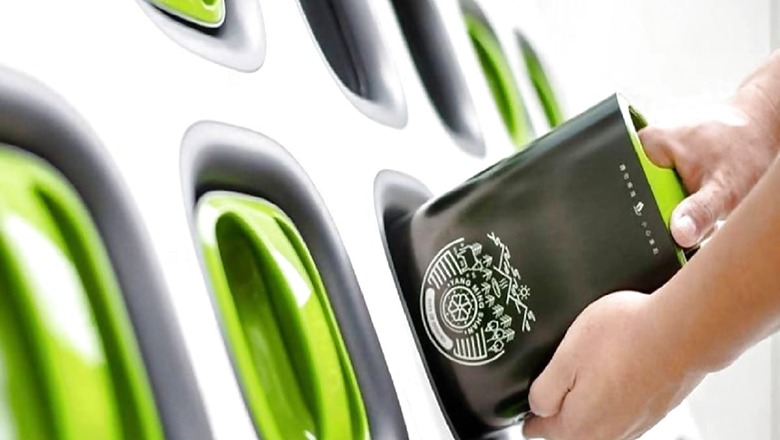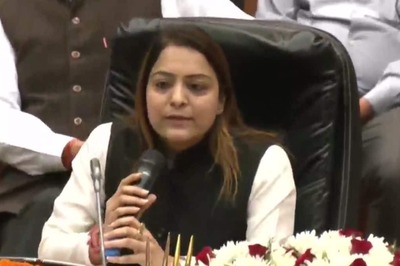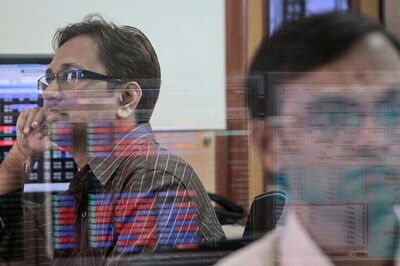
views
There are more than two million electric rickshaws on the roads in India. One thing in common among these vehicles has been that they have so far operated on lead-acid batteries. These batteries are similar to those used in home inverter-based applications.
A set of four batteries is deployed in a vehicle weighing anywhere between 100 and 125 kg in total. These batteries offer a range of anywhere between 50 and 90 km, depending on the quality of the battery as well as on how recently it was replaced. These typically last not more than six to nine months and the range they offer begins depleting drastically thereafter. Another characteristic of these batteries is that it takes up to 10 hours to completely charge them.
Limitations of lead-acid batteries immensely impact the earnings of an e-rickshaw driver. This imposes a technical cap on what a driver can earn in a day. The range a vehicle covers daily is limited not by the availability of business or intent of the vehicle owner but by what the batteries can provide.
Battery Swapping Benefits
To circumvent some of these limitations, drivers sometimes procured two sets of batteries. As and when required, they would replace the first and put it on charging. Generally, however, drivers with just one set of batteries will park their vehicles for three to four hours and top-up their batteries only to derive a few more kilometres in range for the next peak of traffic.
Fortunately, Battery Swapping has emerged as an extremely lucrative alternative for drivers who were unable to utilize their vehicle and time to the maximum extent. Battery swapping companies work on advanced lightweight Li-ion batteries, which typically weigh less than 20 kg and can be easily lifted and placed in the vehicle. Compared to 10 hours for traditional batteries, it takes barely two to three hours to completely charge the Li-ion batteries.
Swapping services ensure that when a driver comes at the end of the range, a replacement of charged batteries is provided immediately, essentially topping them up for another 70 to 90 km – within less than two minutes. Additionally, battery swapping companies provide these batteries as a service or on subscription. In other words, the e-rickshaw driver does not have to incur recurring capital cost to replace batteries.
There are three distinct advantages that battery swapping has unlocked for e-rickshaw drivers. Firstly, they now have virtually an uncapped range since they can just swap their discharged batteries and unlock range. Secondly, battery swapping has eliminated the hassle of battery ownership and, thereby, any trust issues related to battery life have been resolved. Thirdly, drivers need not visit a base location anymore every day to charge their vehicles.
As a result, they are free to run the vehicles anywhere as long as they gain access to a swap station in that locality. This allows them the freedom to drive farther distances without being bound to a base.
Additional Advantages
The above advantages result in more distance and extra flexibility for drivers. Consequently, drivers have been able to almost double their gross earnings by shifting to battery swapping. A typical driver on battery swapping covers 100-150 km a day – almost twice what he was able to do on lead-acid batteries.
Moreover, such freedom enables drivers to accept fares for longer distances – without range anxiety – which translates into higher earnings per hour. On a cost structure, drivers are at par with what they used to incur in charging and ownership of lead-acid batteries. As drivers undertake extra trips and earn more, the marginal additional costs do not pinch a vehicle owner.
Significantly, battery swapping works not just for e-rickshaws but for two-wheelers and electric cars too. China has swiftly adopted battery swapping for its electric vehicles (EVs). But battery swapping is yet to become mainstream for e-rickshaws.
As India rapidly progresses towards electric two-wheelers, hopefully, other forms of EVs will also regard battery swapping as advantageous and a great enabler for EV adoption. This is all the more relevant for commercial use cases, where downtime is expensive and fleet owners look at maximizing the utilisation of their vehicles.
Meanwhile, the icing on the cake is that Li-ion batteries leave a lower carbon trail. In a nutshell, battery swapping benefits both the industry stakeholders and the environment.
Read all the Latest News, Breaking News and Coronavirus News here.




















Comments
0 comment